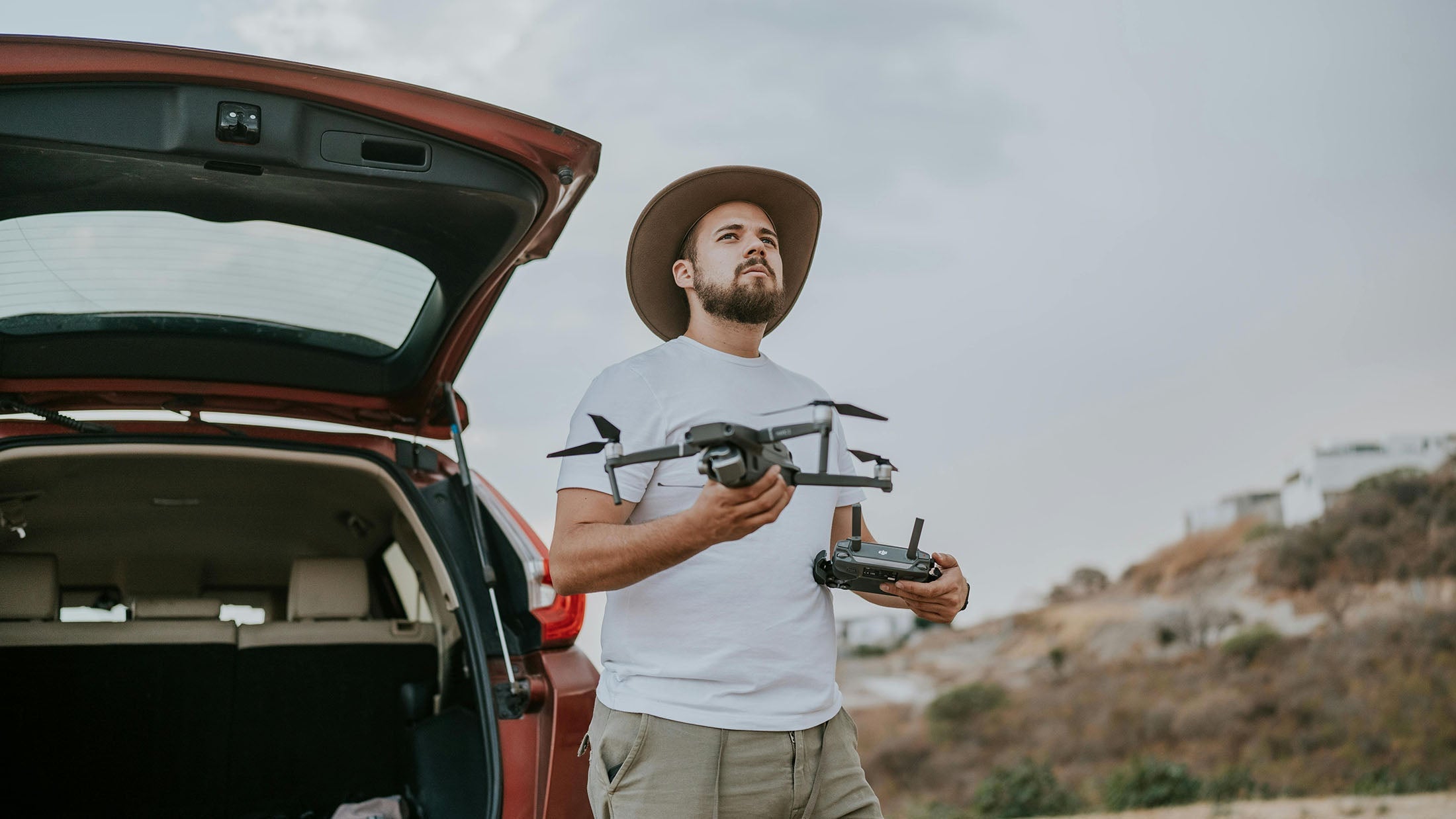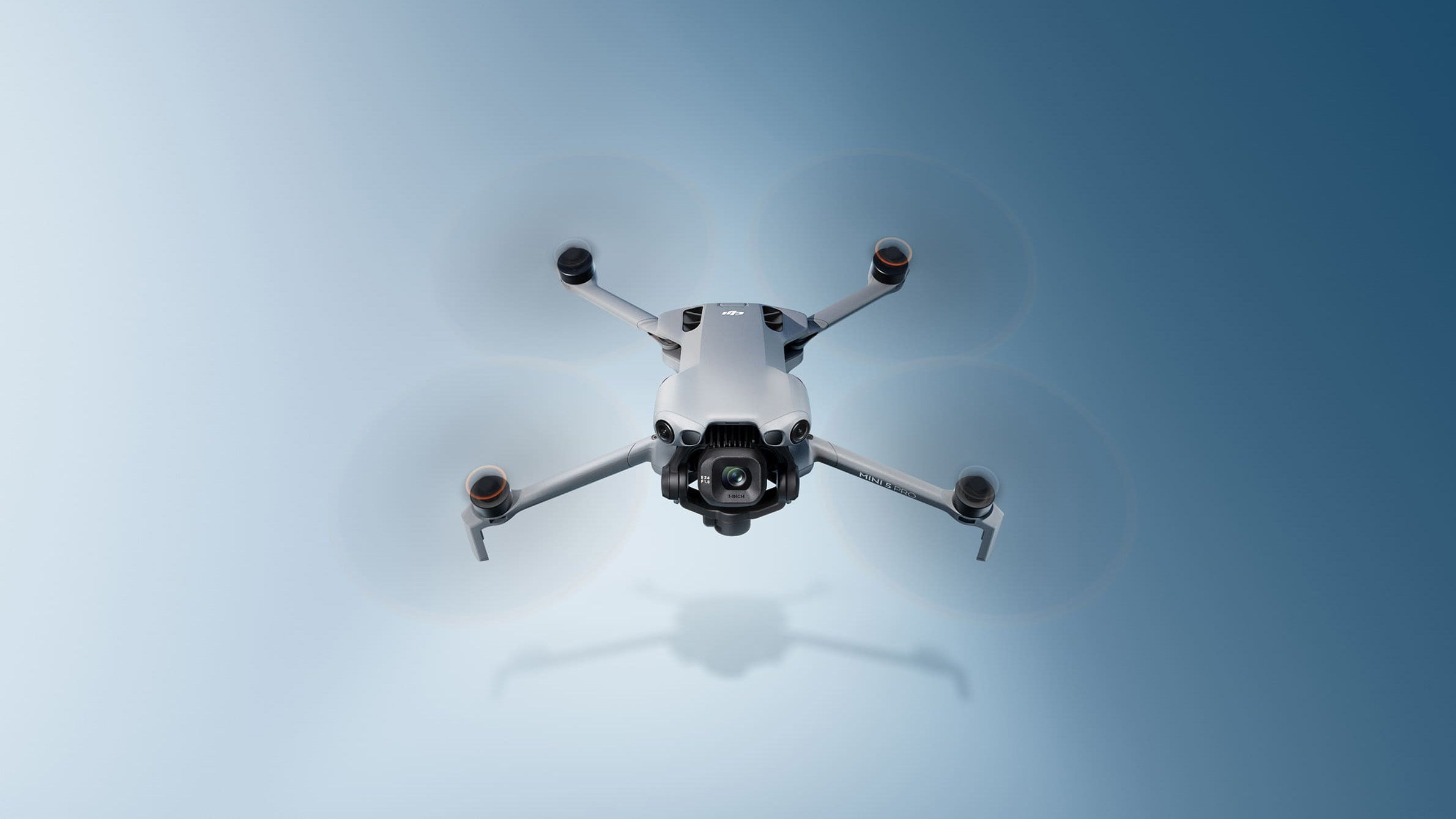Are you looking for more speed and freedom? Then FPV drone flying is a fun challenge. An FPV drone allows you to shoot fast, agile and dynamic video footage. Flying an FPV drone can be quite a challenge. Experience and a good drone can make all the difference here. In this blog, we will tell you all about flying an FPV drone.
What is an FPV drone?
FPV stands for First Person View. This means you fly the drone with video glasses on. The video footage is sent to the video glasses in real time. When you fly an FPV drone, you are looking through the device's camera.
Many drone pilots choose an FPV drone to experience more freedom and create more unique images. Flying FPV drones takes practice. Despite FPV flying becoming more accessible in recent years, not everyone can fly an FPV drone right away. FPV drones are much more sensitive in terms of control than regular drones. You also need to be able to estimate distance tor obstacles and dodge them in time.
FPV drones are often used for making videos and for drone racing. When you master FPV drone flying, you can create fast and dynamic footage.
Self-built FPV drone or Ready-to-fly FPV drone?
When you want to start FPV drone flying, you need a device. You can choose a ready-to-fly FPV drone or a homebuilt FPV drone. Both options have advantages and disadvantages. These are listed below:
| Self-built FPV drone | Ready-to-fly FPV drone |
|
+ Freedom in specifications - Technical knowledge required |
+ Easy to get started - You're stuck with the drones. |
Building FPV drones can be a fun challenge. It gives you more insight into how drones work. You can equip a homebuilt FPV drone with your desired specifications. You are not stuck with the flight board and motors, for example, that the manufacturer has picked. You do need some technical knowledge (and a soldering iron) to build an FPV drone.
Want to start flying FPV quickly and don't have much patience? Then a ready-to-fly FPV drone is an option. Ready-to-fly FPV drone often feature GPS mode, making learning to fly easier. However, still take into account a pretty steep learning curve once you start training without GPS.
What are the best FPV drones?
Choosing the best FPV drone depends on your specific needs and budget. It is important to consider what features you need, such as camera resolution, battery life and flight speed, as well as the manufacturer's reliability and support.
The best FPV drones at the moment are:
- DJI Avata
- Fat Shark 101
- EMAX Tinyhawk 2
- BetaFPV 85X HD
- Holy Stone HS100D
From Drone Class, we have had good experiences with the DJI Avata.
DJI Avata
The DJI Avata is a ready-to-fly drone. This drone makes FPV flying more accessible thanks to its safety options, different flight modes, digital controls and digital FPV goggles. The DJI Avata makes FPV flying accessible to everyone, whether you are a beginner or advanced drone pilot.

DJI Avata has three flight modes: Normal, Sport and Manual. Novice users can start in Normal mode. In this mode, the drone is GPS-assisted, stabilising the drone. Should you want to take it a step further (experience more speed), you can switch to Sport mode.
For ultimate freedom and agility, the drone can be flown in Manual mode. This mode gives the pilot full, manual control over the drone. The maximum speed is 97.2 km per hour. The GPS is switched off and the drone is no longer stabilised. The drone can perform flips and rolls in this mode.
The camera of the DJI Avata is not gimbal stabilised. Images are stabilised using RockSteady. DJI Avata captures images in 4K (60fps). This device is not so suitable for taking photos.
What drone license do you need for an FPV drone?
For any drone over 250 grams, you are required to get the A1-A3 certificate.
You arrange the EU Drone Certificate by attending an online training course and taking an online exam. Once you have passed, you can apply for it. In the Netherlands, the RDW issues the EU drone license.
Self-built FPV drones fall into subcategory A3 from 250 grams. This is because self-built FPV drones cannot be tested for European safety requirements. Thus, with a home-built FPV drone you have to keep a minimum distance of 150 metres from residential areas, industry and recreational zones.
This means you have to keep a minimum distance of 150 metres from residential areas, industry and recreational zones.





Share:
Drone categories: What rules apply?
Drone categories: What rules apply?